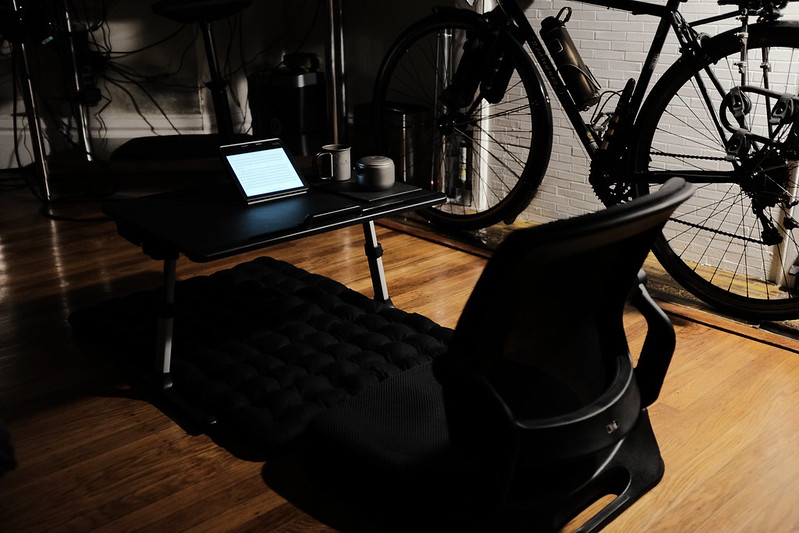Tools for Floor Sitting
I get my zafus from Carolina Morning Designs. Originally I bought one of their crescent models. This is what I took on the 10-day meditation retreat I went on in 2006. Some years after that I bought one of their standard models, and gave away the crescent zafu. I regret this slightly. Between the two, I think the standard round shape is the one to have. But I have been thinking about buying a crescent model again so that I can have one of each.
As with head pillows, buckwheat hulls are my preferred filling for a zafu.
There are a few ways to sit on a zafu, but all of them involve floor contact with the knees, lower legs, and feet. On some floors this can be less than comfortable. The solution here is a zabuton, which is a larger rectangular pillow that goes underneath the zafu. I have a 25” x 31” zabuton from Carolina Morning Designs and a 23” x 25” linen zabuton from Etsy.
The Carolina Morning Designs zabuton is filled with kapok fibre. This is a soft and fluffy material, sort of like a blend between cotton and down. The linen zabuton is filled with buckwheat hulls. While I like buckwheat hulls for structural pillows, the zabuton is used purely for padding. Buckwheat has less of an advantage here. I like both, but I use my kapok zabuton more often.
For all my Carolina Morning Designs pillows, I purchase their removable covers. Cleaning furniture is much easier when you don’t have to go through the hassle of dumping the stuffing. I do not have a removable cover for the linen zabuton, and filling all its individual baffles with buckwheat hulls was an annoying process that I do not want to go through again, so it only gets spot-cleaned.
Sitting on a zafu utilizes core and back muscles. For times when you want to be especially lazy, a chair with a back is preferred. The best option I have found is the HIHIP Floor Chair. This is extremely comfortable. Unlike many floor chairs, it folds, and thus stores (somewhat) compactly. This is actually the only chair I use at home. All other sitting tools or either pillows or stools.
After trying a number of floor tables over the years, I’ve whittled my collection down to two. The Nnewvante Floor Table and the Cooper Desk Pro.
The Cooper Desk Pro is what I use most often. It provides a 23.5” x 17.7” surface, covered with a faux leather that feels pleasant and is easy to wipe clean. It is height adjustable, from 10” to 15”. When deployed, the legs angle out slightly, which allows my own legs to fit under the desk if I am sitting in the chair with my legs straight out. The table also tilts at a few preset angles, but I almost never use this feature.
The Nnewvante Floor Table is only slightly larger at 29.5” x 17.7”, but in use it feels much larger than the Cooper Desk. I rarely need the extra surface area, so I don’t pull this table out as often. It also is height adjustable, from 10” to 15”. Where the Cooper Desk has five preset height positions, this one allows you to stop the legs anywhere within the adjustable range. That sounds nice, but in practice means that you sometimes have to do a little back-and-forth to get both legs at the same height. Because of this I just leave the adjustment at whatever height I have found most useful and then never touch it again.
The Nnewvante Floor Table has their brand name engraved in the surface. I find this to be distasteful. Noticeable advertising does not belong on furniture. The Cooper Desk Pro does have their logo on the surface, but it is subtle enough that I rarely notice it.
